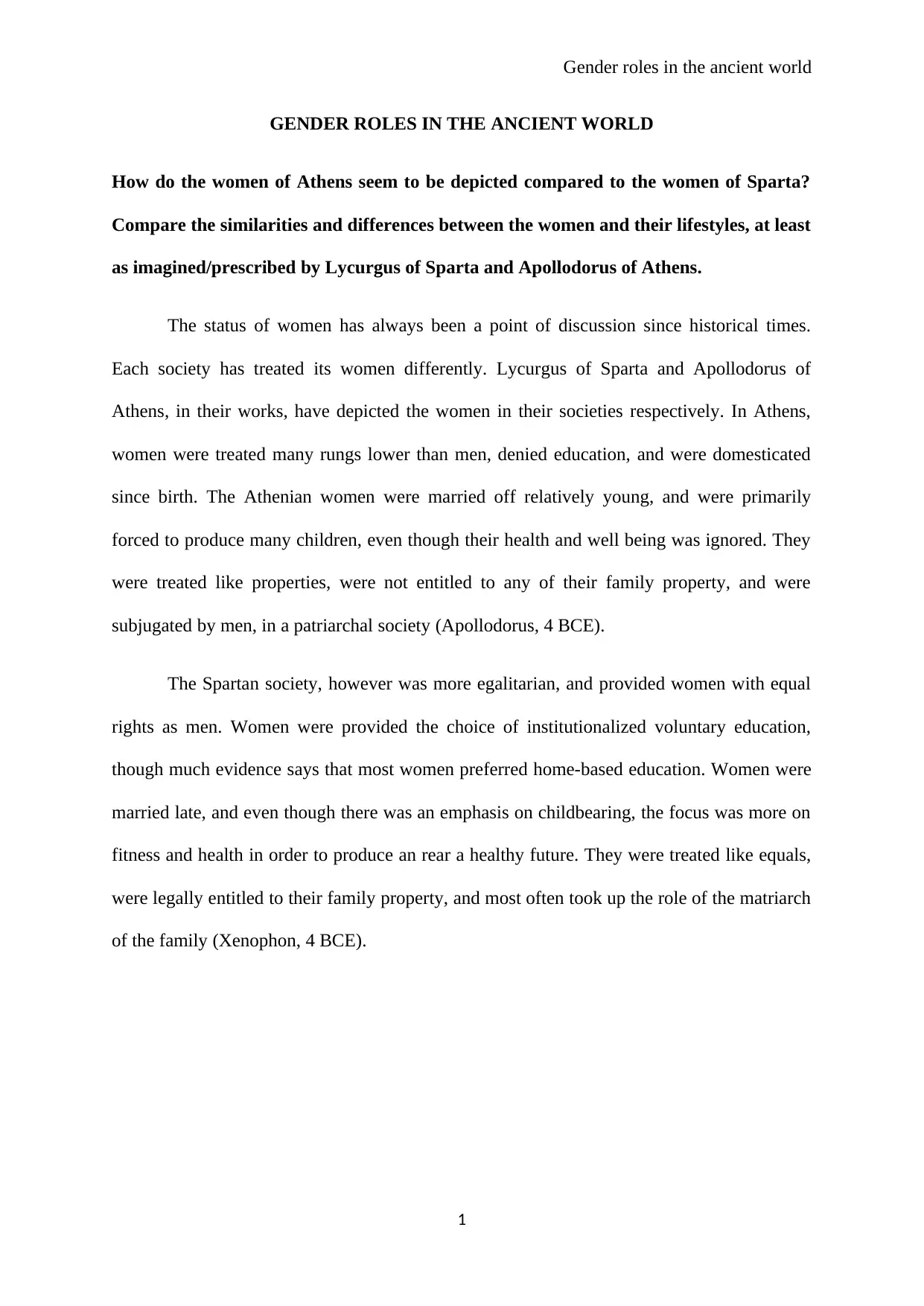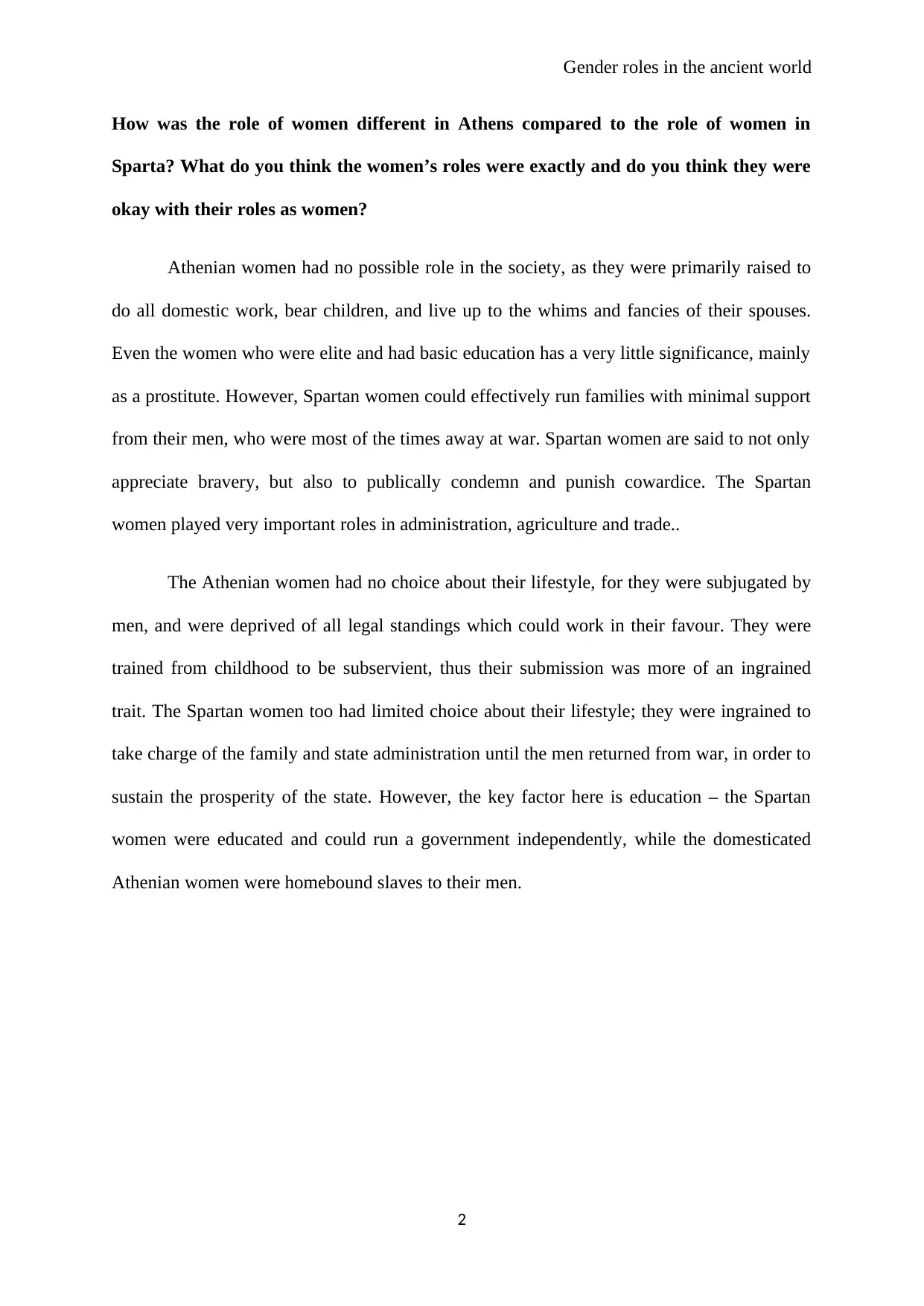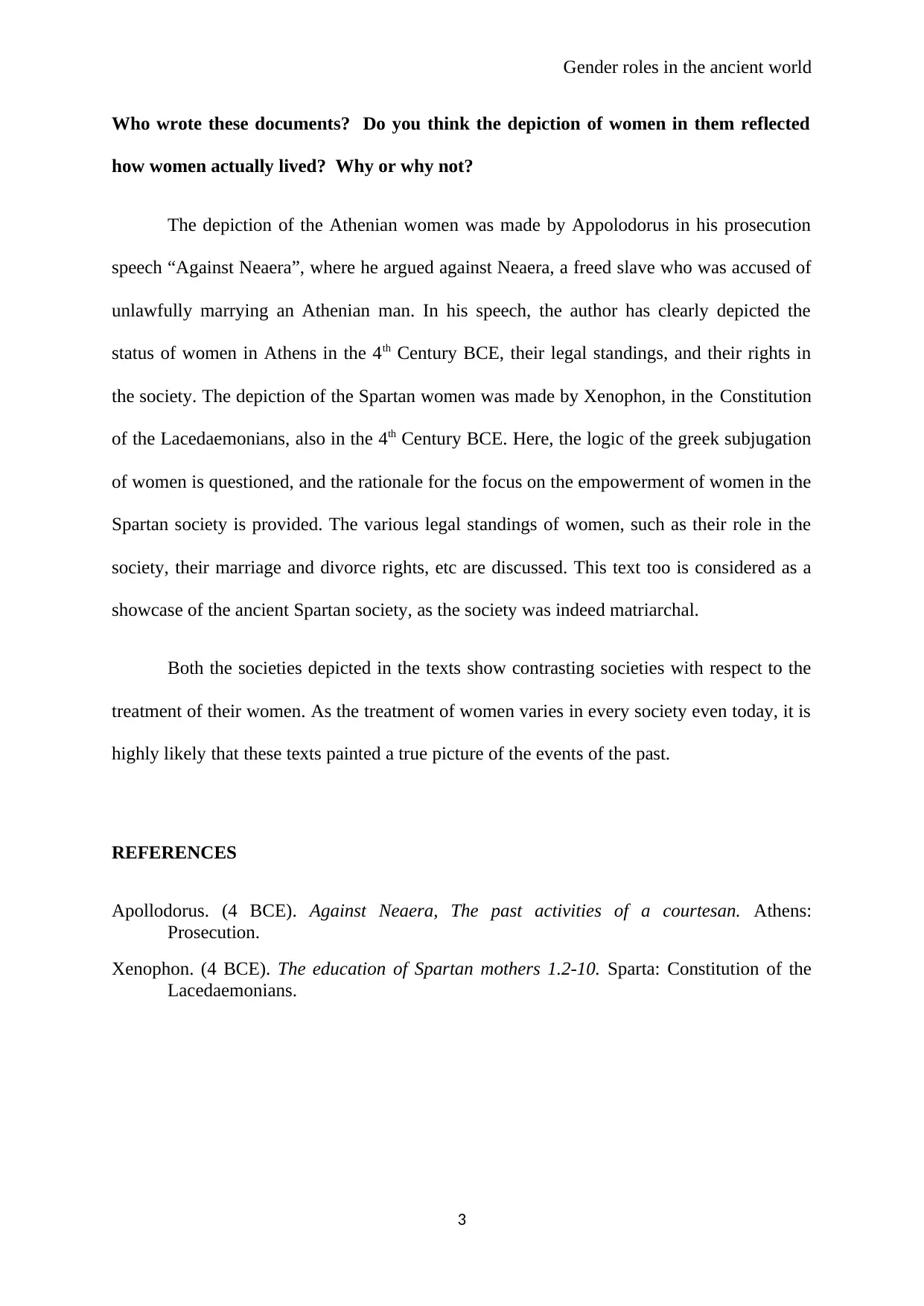Fall 2018 CSUF History 110A: Gender Roles in the Ancient World
VerifiedAdded on 2023/06/07
|3
|871
|232
Homework Assignment
AI Summary
This assignment delves into the contrasting gender roles in ancient Athens and Sparta, exploring how women were depicted and treated in these societies. The student analyzes primary sources, including works by Apollodorus and Xenophon, to compare the lifestyles, education, legal standings, and societal contributions of women in each city-state. The assignment highlights the differences in women's rights, emphasizing the more egalitarian nature of Spartan society compared to the more restrictive Athenian society. It examines the impact of societal expectations and the influence of gender on various aspects of women's lives, including marriage, property rights, and participation in public life. The student also considers the historical context, including the influence of agriculture and societal development on gender equality, and discusses the role of women in administration, agriculture, and trade in Sparta. The assignment concludes by suggesting that the texts paint a true picture of the events of the past.
1 out of 3






![[object Object]](/_next/static/media/star-bottom.7253800d.svg)